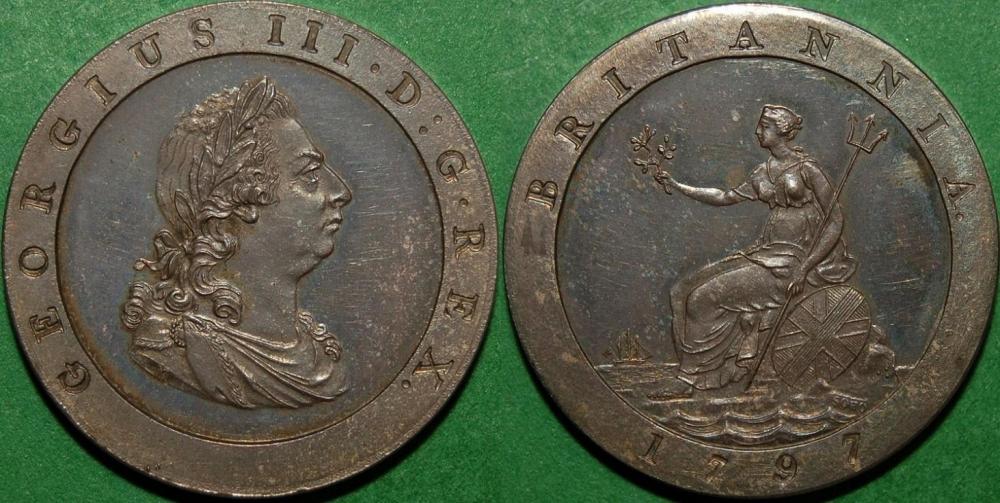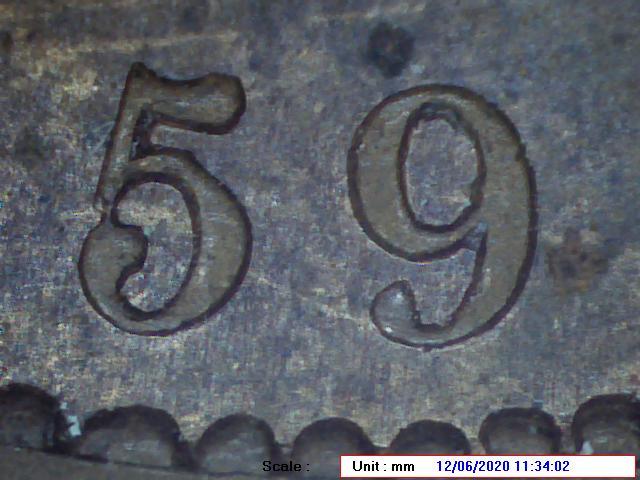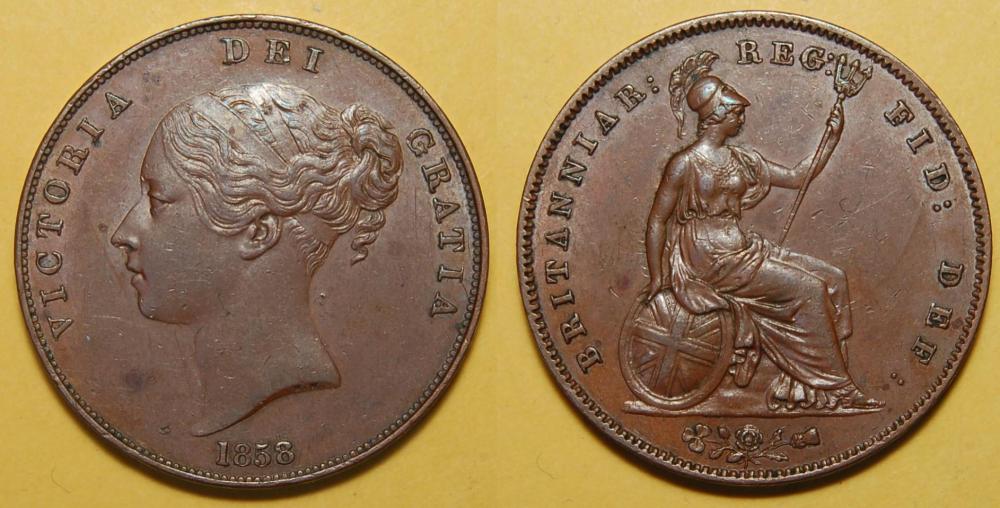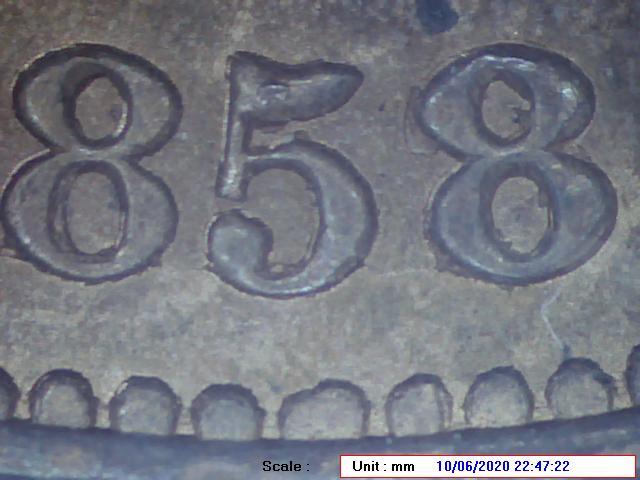-
Posts
12,740 -
Joined
-
Last visited
-
Days Won
339
Content Type
Profiles
Forums
Events
Downloads
Store
Gallery
Articles
Everything posted by Rob
-
Hopefully designer sunglasses are included for this price. https://www.ebay.co.uk/itm/1787-George-III-Shilling-VERY-RARE-1-OVER-MIRRORED-1-Superb-coin-see-photos/233588897551?hash=item3662fbb70f:g:k3EAAOSwh5pevrRM
-

have you seen the price of a kew gardens ?
Rob replied to craigy's topic in British Coin Related Discussions & Enquiries
I tried to click on the link and was unexpectedly saved from viewing by the Daily Mail pointing out I had an ad blocker The ability to surf randomly in the knowledge the DM will block me from unnecessarily viewing their articles is as good as winning the lottery. Mine's a pint. -
There is an alternative explanation for gold not suffering from striking splits in that it is softer and so can deform (spread) more easily. Silver has a problem in that it is extracted from ore whereas gold is found as nodules and not extracted from a salt. Being the path of least resistance, I don't think it a coincidence that gold was fine until debased by Henry VIII. Then you have the question of alloying in the case of silver, with the divergent melting points of the alloy constituents coming into play. I'm pretty certain the more extensive haymarking seen on silver is down to poor metal mix because copper's m.p. is 100 degrees higher than silver compared to 20 degrees between copper and gold, so in the case of the former, the silver will be melted long before the copper.
-
Someone inadvertently left detail on the coin?
-
The only thing I've heard of was the Henry I coins requiring to be snicked to be current. Coins were current as long as the inner circle was intact. Where are we talking about. England, Scotland, Denmark?
-

Let's See Your Toned English Milled Silver!
Rob replied to Paulus's topic in British Coin Related Discussions & Enquiries
Oops, red face time. Not sure what I was thinking about there other than not the response. Silly sod. I'm as mad as the bloke on the obverse. -

Let's See Your Toned English Milled Silver!
Rob replied to Paulus's topic in British Coin Related Discussions & Enquiries
No idea, but a guess would be the need for pennies far outweighed that for halfpennies [and farthings], the requirement for which could be considered already served by the numbers circulating, whether genuine or not. Another angle could be that the security edge wasn't sufficiently developed for a currency issue, bearing in mind there was no security edge on the pennies or twopences. Or maybe it was down to a shortage of copper given the quantities needed for ships' hulls. The IOM being self determining could presumably issue what it liked. The head of state might have been Victoria, but the Tynwald passed the laws. -

Let's See Your Toned English Milled Silver!
Rob replied to Paulus's topic in British Coin Related Discussions & Enquiries
-

Let's See Your Toned English Milled Silver!
Rob replied to Paulus's topic in British Coin Related Discussions & Enquiries
Things are a bit dead at the moment, so let's try to breathe a bit of life into this place. P1163 Taylor restrike pattern halfpenny. -
A bit of everything for everyone. 9 or 10 could be got from Coins of England, 1 coins of Ireland, Scotland etc, 5 from ESC, 5 general knowledge, 1 google street view, 3 from Peck. So even with a copy of Spink (which I assumed most would have), plus either ESC or Peck, you are at least half way there. It's not a question of knowing all or not bothering - it's supposed to be fun. At our club quiz, I can't remember anyone getting more than 75-80%. Same goes for the intercounties quiz we go to at Crewe every year. When it's my turn to set the questions for the club I usually aim for a mix of ancient, early & late hammered, milled, tokens, designs/designers and general knowledge in equal measures. Do I know the answers? Yes if I set them, otherwise no. I still have to look things up to get suitable questions for ancients and tokens about which I know very little. It's actually quite hard to find a balance between the condescendingly simple and the challenging for the simple reason that most collectors sit in a niche, with very few who collect everything. Consequently, 20-50% is quite normal.
-
A tad late, but 9 right. Q.12 has reduced by one mint since I first posed the question 5 years ago, because Bruton no longer appears following replacement of the signs. Q.20 was pointed out to me that the wording was imprecise, as I had included Offa, Edward the Elder & Aethelstan I, but these were not strictly kings of all England. Sleepy won, but by default, as he was the only person who bothered to reply. I didn't think it worth posting the results given the lack of interest.
-
I'd say better given the small lump below the centre line of the 8. The 5 in this image looks to be the same punch as the halfpenny 5
-
-
If that is what purports to be a Bramah 25c then a halfpenny 9 would be a pretty good fit. Top loop would superimpose fairly well on the top loop of the 8, back of the 9 would fit the line joining the two loops and the tail of the 9 is slightly narrower than the loop with the end curled back as above.
-
I know it is what MG calls 8/2. I'm not saying he's wrong because I can't prove otherwise, but the 8 over 2 is problematic insofar as we can't be sure what a 2 would look like, being the only number not used on a copper penny (or at least not since 1827). On the image I posted, there is a line going through the top loop of the 8 approximately level with half way up the lump at the side - difficult to image with the microscope, but starts on the tip of the black mark RHS in the top loop. At the top of the protruding section is a small lump, which has a companion raised lump on the left hand side of the top loop at the same level, which may be an indicator of a filled die. There is no corresponding mark on the right side of the loop. The other interesting bit is the shape of the 5, the loop of which appears to join higher up the vertical. Plus there is a significant raised mark on the top bar. What was that? Going off on a tangent, there is also a flat topped 3 punch available as used on the 1839 penny and the IOM penny of the same date which is slightly smaller than the other 3 digits. If that is floating around within the number punches, it can't be discounted as being used in error. This is the smallest flaw I've had. Barely a trace on the 8 and similarly around Victoria. .
-
I concur. The ability to play with really fun things fostered a want to learn attitude. When I was a kid it seems like you were able to experiment with everything, from mini civil engineering projects, to making things explode, to exploring the country far and wide on your own as a very young teenager. Something today's paranoia and regulated environment has destroyed. Accidents could happen, accidents did happen, but then, they always will. Consider it a small niche of the greater experiment that is Darwinism.
-
-
First bit is easy as it is the Peck coin which had been languishing in the dungeon since the Noble sale in 1973 - see below. It was listed on eBay within a couple days of the Baldwin sale in May 2006 as a BIN for £800, he having paid £360 hammer for it. I finally bought it in August. It came from a seller that always had bids on his coins (including this one) from a couple of dodgy bidders (tee2459 & matthews9289) with a combined feedback of 1. It transpired that he lived three miles up the road. Small world.
-
I think Ebay take a cut if you pull a listing when bids have already been placed, but a non-paying bidder means you can cancel the order and get fees refunded if unwilling to sell. Or if fed up as in my case, let the underbidder take it on a second offer. Usually I will reject a second offer on principle as I resent being taken for a ride, but on occasion it can be worth it.
-
You can have some fun here if you want the coin. Bid consistently to a given level that you would be willing to pay. When shilled and subsequently relisted, go to the same level. Repeat until the vendor gets fed up and lets you have it. That's what I did with the 1718 silver halfpenny. I consistently bid £10 above my max in the room at Baldwin's where I was the underbidder, leaving the owner to repeatedly outbid me. After a few listings, he gave up trying and let me have it at my max, leaving him to absorb a bit of a loss on the buyer's premium and me paying less than I would have done if I bought it in the room. He bought it speculatively hoping for a profit, so a small loss was all part of the game. Doubles all round.
-
I had one that was listed as such in a DNW sale, but wasn't convinced. Yes it had reflective fields, but fell a bit short including the rims IMO. If it was one, then I've seen plenty that could be considered candidates. It does worry me that Peck says they are all 5 ports but from different current dies, as this leaves open the possibility that they are just early strikes from well prepared dies, of which there must have been many given the output. In my view the jury should be out as to whether they exist, as it's certainly questionable. I've got half a dozen or more 1799 Soho proof/pattern (call them what you will) halfpennies here and by comparison, the fields and rims on these are much better. For what it's worth, my 7 gunports currency is just as good quality.
-

1876-A German 5 Mark with a weird edge
Rob replied to Generic Lad's topic in Enquiries about Non British coins
Looks like someone has been messing about.










